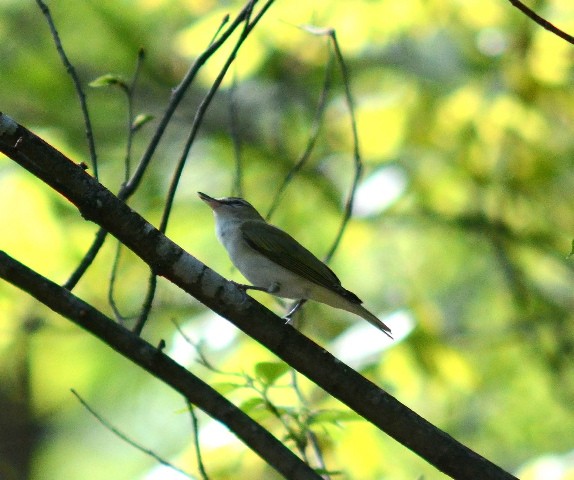Red-eyed Vireo
A species of Vireos, Also known as Magnolia Bird Scientific name : Vireo olivaceus Genus : Vireos
Red-eyed Vireo, A species of Vireos
Also known as:
Magnolia Bird
Botanical name: Vireo olivaceus
Genus: Vireos
Content
Description People often ask General Info
Description
The red-eyed Vireo is a small songbird named after its distinctive red eyes; however, they are born with brown eyes that became red by the end of the bird's first winter. It's a highly territorial, migratory species and one of the most "talented" and persistent singers among songbirds. It is found high in tree canopies, and it's more often heard than seen. When it comes to the ground, it moves by distinctive hopping.
Size
15 cm (6 in)
Life Expectancy
10 years
Nest Placement
Tree
Clutch Size
1 - 5 eggs
Incubation Period
1 - 2 broods
Number of Broods
11 - 15 days
Nestling Period
10 - 12 days
Feeding Habits
Red-eyed Vireo's diet consists predominantly of insects and fruits, with variations across seasons. Insects, particularly caterpillars, dominate the summer menu, while plant foods, especially small wild fruits, become more common towards fall migration. They adapt to eat mostly fruits in their South American winter habitats.
Habitat
Red-eyed Vireo primarily resides in deciduous or mixed woodlands, preferring dense understories and avoiding forest edges. They adapt to various environments, including hardwood forests near water, northern thickets, and urban green spaces. During migration, their range extends to various forested landscapes. In winter, they inhabit the Amazon basin's varied vegetation, from rainforests to mangroves and plantations, up to high altitudes.
Nest Behavior
The female red-eyed Vireo meticulously builds the nest, with some materials supplied by the male. Egg laying and parental care specifics are not provided, but it is typical of songbirds to have several broods per season with both parents participating in feeding the young.
Nest Characteristics
Red-eyed Vireo's nests are typically found in a shaded fork of a midstory to understory tree, usually deciduous, 10-15 feet high, with a clear view. Made over 4-5 days, the open-cup structure is constructed from bark, grasses, pine needles, wasp-nest paper, and plant fibers, bound with spider-web adhesive, and measures slightly over 2 inches across.
Dite type
Insectivorous
People often ask
General Info
Feeding Habits
Bird food type
Bird Feeder Type

Small Hopper

Small Tube Feeder
Sounds
Song
Recording location: United States
Behavior
Throughout their active hours, which start before dawn until the afternoon, red-eyed Vireo males are known for their incessant songs, often performed from treetop perches around their territories. Their interaction with rivals can escalate to physical confrontations, involving posturing and grappling. In response to threats, both sexes exhibit defensive behaviors such as raising crown feathers, and fanning tails. The female is particularly defensive of the nest, confronting potential predators with aggression. Foraging involves hopping and flitting between branches, primarily gleaning invertebrates from leaf undersides. These birds are seasonally monogamous, and while the female primarily handles nest-building and chick-rearing, the male supports by providing food and nesting material. Bonding behaviors include wing-quivering and twittering. During migratory and winter periods, red-eyed Vireo may form large mixed-species flocks.
Species Status
Not globally threatened.
